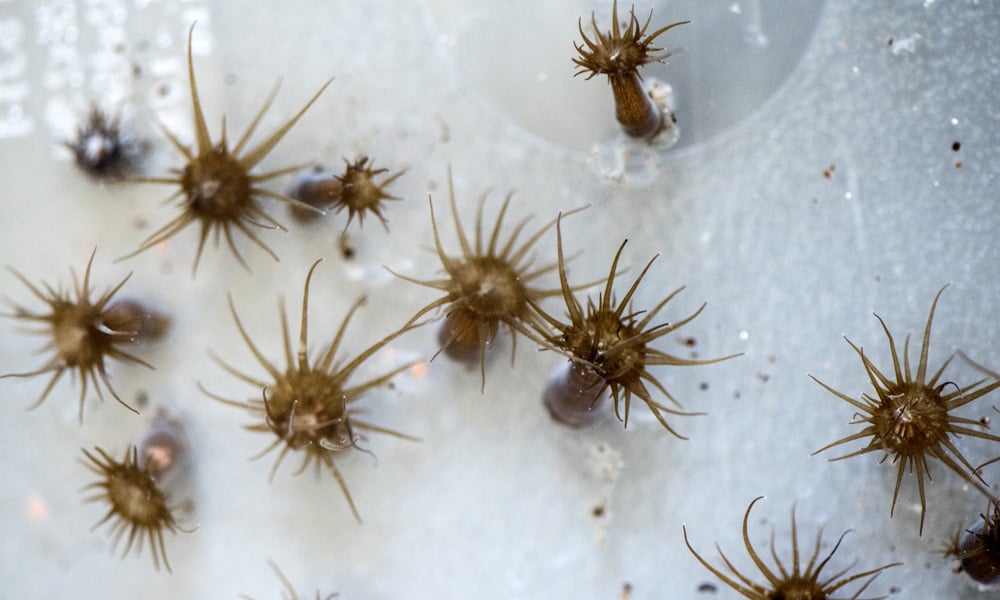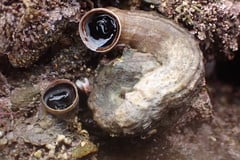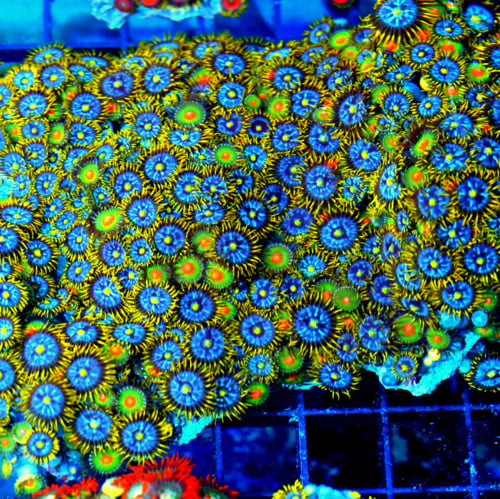Extreme Corals News and Updates
The Hidden Lives of Coral Predators: What to Watch For in Your Tank
Spotting and Managing Coral Predators to Keep Your Reef Tank Thriving
Coral predators can pose a serious threat to your reef tank, often hiding in plain sight. This blog explores common pests like Aiptasia, nudibranchs, and flatworms, their impact on coral health, and effective strategies to remove them while maintaining a balanced ecosystem.
by scott Shiles • February 06, 2025
Zoanthids Coral Care, SPS Coral Care, Reef Tank Maintenance, Soft Corals Care, All Corals, LPS Coral Care
Coral Predators: A Hidden Threat in Your Reef Tank
While reef tanks often appear serene and harmonious, beneath the surface lurks a variety of predators that can wreak havoc on your coral inhabitants. These pests, often introduced unknowingly, can quickly spread and harm the health of your reef if left unchecked. From stinging anemones to stealthy flatworms, understanding these threats and learning how to manage them is essential for maintaining a thriving reef tank.
In this guide, we’ll uncover the most common coral predators, how to identify them, and strategies to protect your corals from their hidden attacks.
Aiptasia Anemones: The Stinging Invaders
What Are They?
Aiptasia are small, fast-spreading anemones that can take over a reef tank if not controlled. They sting nearby corals, stealing nutrients and space, and their ability to reproduce quickly makes them a notorious pest

How to Identify:
- Transparent or brownish in color.
- Tentacles that extend outward and retract when disturbed.
- Often found in crevices or on live rock.
How to Remove:
- Manual Methods: Use a syringe to inject a solution like lemon juice, vinegar, or a commercial product (e.g., Aiptasia-X) directly into the anemone.
- Biological Control: Introduce natural predators like peppermint shrimp or Berghia nudibranchs.
Montipora-Eating Nudibranchs: The Coral Parasites
What Are They?
Montipora-eating nudibranchs are tiny pests that specifically target Montipora corals. They feed on the coral’s tissue, leaving behind white, damaged patches.

How to Identify:
- Small, white nudibranchs often blending into Montipora coral.
- Visible damage or discoloration on affected corals.
- Found underneath coral frags or in shaded areas.
How to Remove:
- Manual Removal: Use tweezers to remove visible nudibranchs during a dip or inspection.
- Coral Dips: Dip affected corals in a solution like iodine or coral-safe pest treatments to dislodge pests.
- Biological Control: Introduce wrasses, such as six-line wrasses, known to prey on nudibranchs.
Flatworms: The Silent Spreaders
What Are They?
Flatworms are small, soft-bodied pests that attach themselves to coral surfaces. Certain species, like the Acropora-eating flatworm, can cause severe tissue loss and coral decline.
How to Identify:
- Thin, oval-shaped pests that move slowly across corals.
- May appear as brown, green, or red spots on corals.
- Visible damage to Acropora or other coral types.
How to Remove:
- Flatworm Exit Treatments: Apply reef-safe flatworm treatments and follow up with a water change.
- Manual Removal: Siphon flatworms during water changes to reduce their numbers.
- Biological Control: Introduce predators like mandarinfish or certain wrasses that feed on flatworms.
Vermetid Snails: The Hidden Hitchhikers
What Are They?
Vermetid snails are tube-shaped mollusks that release mucus webs to trap food. While they may seem harmless, their webs can irritate nearby corals and inhibit polyp extension.

How to Identify:
- Small, spiral-shaped tubes attached to live rock or coral bases.
- Visible mucus strands extending into the water column.
How to Remove:
- Manual Removal: Break the snail’s tube structure and remove it from the tank.
- Sealing Tubes: Use reef-safe epoxy to seal their openings.
Zoanthid-Eating Nudibranchs: The Polyp Predators
What Are They?
Zoanthid-eating nudibranchs exclusively target zoanthid corals, feeding on their polyps and rapidly depleting colonies.
How to Identify:
- Small, white nudibranchs camouflaged on zoanthid polyps.
- Shrinking or disappearing zoanthid colonies.
- Visible egg clusters on the underside of coral frags.
How to Remove:
- Coral Dips: Soak zoanthids in a coral-safe pest dip to remove nudibranchs and eggs.
- Manual Inspection: Scrape off visible eggs and nudibranchs.
- Biological Control: Introduce certain wrasse species that may prey on nudibranchs.
Tips to Prevent Coral Predators
- Quarantine New Additions: Always quarantine new corals and fish to ensure pests don’t hitch a ride into your main tank.
- Inspect Regularly: Check corals and live rock for signs of pests during maintenance.
- Use Coral Dips: Treat new corals with coral dips before introducing them to the tank.
- Maintain Water Quality: Healthy corals are more resilient to pest infestations.
Protecting Your Reef from Hidden Threats
Coral predators are an inevitable part of reefkeeping, but with vigilance and the right strategies, you can keep their impact to a minimum. By identifying common pests like Aiptasia, nudibranchs, and flatworms early, and taking proactive measures, you can maintain a healthy, thriving reef ecosystem.
Ready to stock your tank with pest-free, aquacultured corals? Buy corals online at ExtremeCorals.com and build a predator-free reef today!

